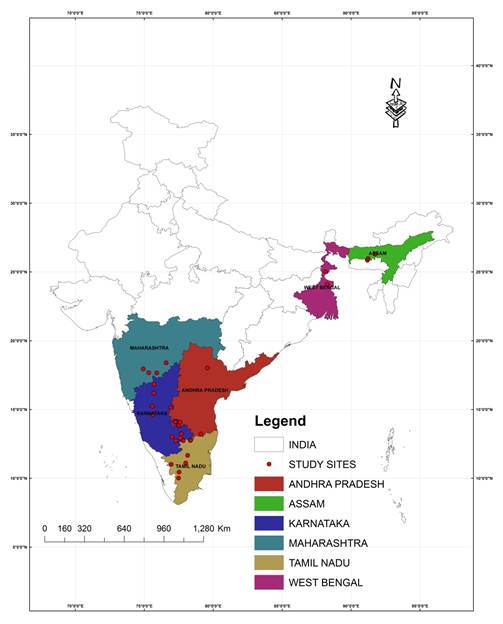Journal of Entomology and Zoology Studies
Volume 2, Issue 2
Overview of distribution and diversity of Wolbachia endosymbiont among the different geographical populations of Indian Uzifly, Exorista sorbillans (Diptera: Tachinidae)
Author(s): H.C. Huchesh and H.P. Puttaraju
Abstract: Microorganisms are unique life forms having great impact on functioning and perpetuation of biosphere. Among them, Wolbachia is ubiquitous gram negative rickettsial endosymbiont taking its shelter in somatic and reproductive tissues of class insecta. Wolbachia induces variety of phenotypes within insects from reproductive parasitism to mutualism. Due to the infection dynamics of Wolbachia and its ability to induce reproductive anomalies in their hosts, it has been touted as the most effective bio-control agent for management of insect pests and vectors. However, for implementation of any Wolbachia based bio-control strategies it is essential to know its distribution, diversity and interactions with their hosts. Wolbachia interactions in Uzi fly Exorista sorbillans are well documented and are proposed as agents for management of this pest. However, their distribution and diversity across the entire Indian sub-continent is left void. In the current study 31 populations of Uzi fly collected from the Mulberry Silkworm belts of India have been screened and characterized. 213 samples were screened and infection dynamics in the individuals have been documented. The findings suggest high prevalence of AB Wolbachia super infections in field populations of Uzi fly. This important update on the infection status and diversity of Wolbachia is of greater significance for implementation of the previously proposed Wolbachia based bio-control strategies of Uzi fly in India.

Fig : The populations collected from different geographical study areas are represented in dots
Download Full Article : Click Here
Advertisement:


